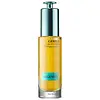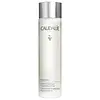What's inside
What's inside
 Key Ingredients
Key Ingredients

 Benefits
Benefits

 Concerns
Concerns

 Ingredients Side-by-side
Ingredients Side-by-side

Collagen
MoisturisingWater
Skin ConditioningPropanediol
SolventIsononyl Isononanoate
EmollientButylene Glycol
HumectantGlycerin
HumectantBetaine
HumectantPentylene Glycol
Skin ConditioningDextrin Palmitate
EmulsifyingCollagen Amino Acids
MoisturisingParachlorella Beijerinckii Exopolysaccharides
Skin ProtectingChlorella Protothecoides Oil
EmollientHelichrysum Stoechas Flower Extract
PerfumingCylindrotheca Fusiformis Extract
AntioxidantNiacinamide
SmoothingTocopherol
AntioxidantPalmitoyl Tripeptide-1
Skin ConditioningPalmitoyl Tetrapeptide-7
Skin ConditioningAdenosine
Skin ConditioningHelianthus Annuus Seed Oil
EmollientLeuconostoc/Radish Root Ferment Filtrate
AntimicrobialCaprylic/Capric Triglyceride
MaskingPalmitic Acid
EmollientDisodium EDTA
Carbomer
Emulsion StabilisingSodium Lactate
BufferingAmodimethicone
Homosalate
Skin ConditioningPolysorbate 20
EmulsifyingButyl Methoxydibenzoylmethane
UV Absorber1,2-Hexanediol
Skin ConditioningCaprylyl Glycol
EmollientOctocrylene
UV AbsorberSodium Hydroxide
BufferingPhenoxyethanol
PreservativeParfum
MaskingLimonene
PerfumingCI 40800
Cosmetic ColorantCollagen, Water, Propanediol, Isononyl Isononanoate, Butylene Glycol, Glycerin, Betaine, Pentylene Glycol, Dextrin Palmitate, Collagen Amino Acids, Parachlorella Beijerinckii Exopolysaccharides, Chlorella Protothecoides Oil, Helichrysum Stoechas Flower Extract, Cylindrotheca Fusiformis Extract, Niacinamide, Tocopherol, Palmitoyl Tripeptide-1, Palmitoyl Tetrapeptide-7, Adenosine, Helianthus Annuus Seed Oil, Leuconostoc/Radish Root Ferment Filtrate, Caprylic/Capric Triglyceride, Palmitic Acid, Disodium EDTA, Carbomer, Sodium Lactate, Amodimethicone, Homosalate, Polysorbate 20, Butyl Methoxydibenzoylmethane, 1,2-Hexanediol, Caprylyl Glycol, Octocrylene, Sodium Hydroxide, Phenoxyethanol, Parfum, Limonene, CI 40800
Water
Skin ConditioningVitis Vinifera Fruit Water
Skin ConditioningCitrus Aurantium Amara Flower Water
MaskingGlycerin
HumectantMethylpropanediol
SolventGlycolic Acid
BufferingSodium Hydroxide
BufferingVitis Vinifera Juice
AntioxidantCaprylyl Glycol
EmollientCitric Acid
BufferingArginine
MaskingSodium Benzoate
MaskingPaeonia Lactiflora Root Extract
Skin ConditioningPhenylpropanol
MaskingPotassium Sorbate
PreservativeSodium Phytate
Linalool
PerfumingLimonene
PerfumingWater, Vitis Vinifera Fruit Water, Citrus Aurantium Amara Flower Water, Glycerin, Methylpropanediol, Glycolic Acid, Sodium Hydroxide, Vitis Vinifera Juice, Caprylyl Glycol, Citric Acid, Arginine, Sodium Benzoate, Paeonia Lactiflora Root Extract, Phenylpropanol, Potassium Sorbate, Sodium Phytate, Linalool, Limonene
Ingredients Explained
These ingredients are found in both products.
Ingredients higher up in an ingredient list are typically present in a larger amount.
Caprylyl Glycol is a humectant and emollient, meaning it attracts and preserves moisture.
It is a common ingredient in many products, especially those designed to hydrate skin. The primary benefits are retaining moisture, skin softening, and promoting a healthy skin barrier.
Though Caprylyl Glycol is an alcohol derived from fatty acids, it is not the kind that can dry out skin.
This ingredient is also used as a preservative to extend the life of products. It has slight antimicrobial properties.
Learn more about Caprylyl GlycolGlycerin is already naturally found in your skin. It helps moisturize and protect your skin.
A study from 2016 found glycerin to be more effective as a humectant than AHAs and hyaluronic acid.
As a humectant, it helps the skin stay hydrated by pulling moisture to your skin. The low molecular weight of glycerin allows it to pull moisture into the deeper layers of your skin.
Hydrated skin improves your skin barrier; Your skin barrier helps protect against irritants and bacteria.
Glycerin has also been found to have antimicrobial and antiviral properties. Due to these properties, glycerin is often used in wound and burn treatments.
In cosmetics, glycerin is usually derived from plants such as soybean or palm. However, it can also be sourced from animals, such as tallow or animal fat.
This ingredient is organic, colorless, odorless, and non-toxic.
Glycerin is the name for this ingredient in American English. British English uses Glycerol/Glycerine.
Learn more about GlycerinLimonene is a fragrance that adds scent and taste to a formulation.
It's found in the peel oil of citrus fruits and other plants such as lavender and eucalyptus. The scent of limonene is generally described as "sweet citrus".
Limonene acts as an antioxidant, meaning it helps neutralize free radicals.
When exposed to air, oxidized limonene may sensitize the skin. Because of this, limonene is often avoided by people with sensitive skin.
The term 'fragrance' is not regulated in many countries. In many cases, it is up to the brand to define this term. For instance, many brands choose to label themselves as "fragrance-free" because they are not using synthetic fragrances. However, their products may still contain ingredients such as essential oils that are considered a fragrance.
Learn more about LimoneneSodium Hydroxide is also known as lye or caustic soda. It is used to adjust the pH of products; many ingredients require a specific pH to be effective.
In small amounts, sodium hydroxide is considered safe to use. However, large amounts may cause chemical burns due to its high alkaline.
Your skin has a natural pH and acid mantle. This acid mantle helps prevent harmful bacteria from breaking through. The acid mantle also helps keep your skin hydrated.
"Alkaline" refers to a high pH level. A low pH level would be considered acidic.
Learn more about Sodium HydroxideWater. It's the most common cosmetic ingredient of all. You'll usually see it at the top of ingredient lists, meaning that it makes up the largest part of the product.
So why is it so popular? Water most often acts as a solvent - this means that it helps dissolve other ingredients into the formulation.
You'll also recognize water as that liquid we all need to stay alive. If you see this, drink a glass of water. Stay hydrated!
Learn more about Water